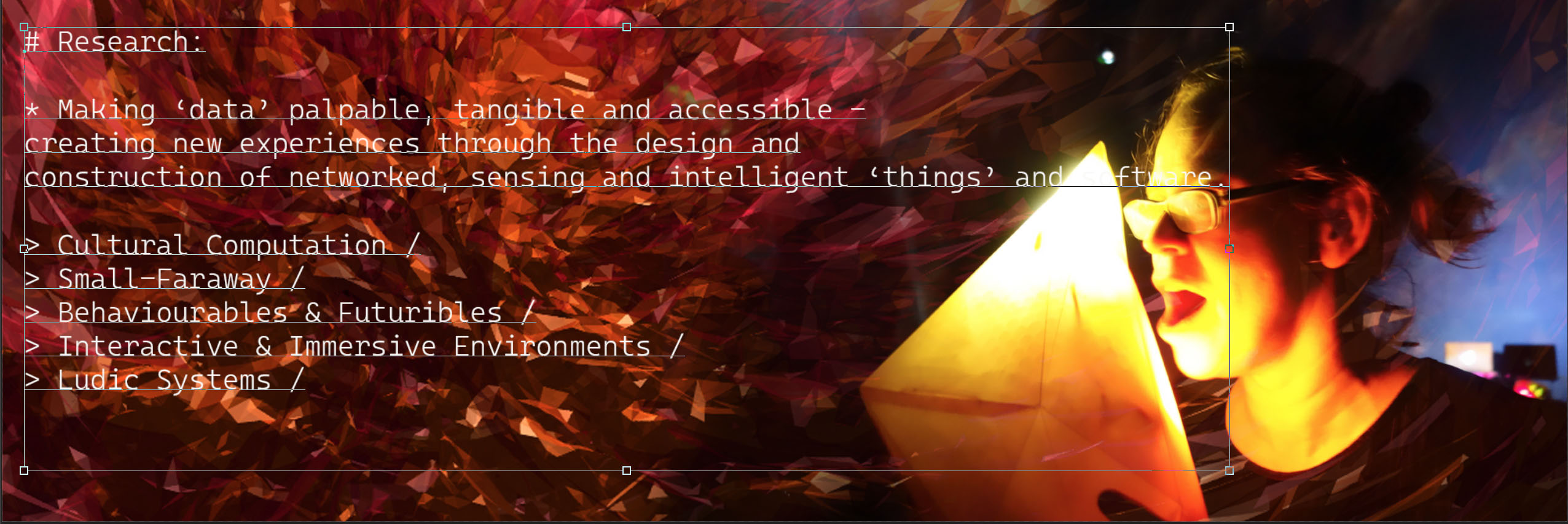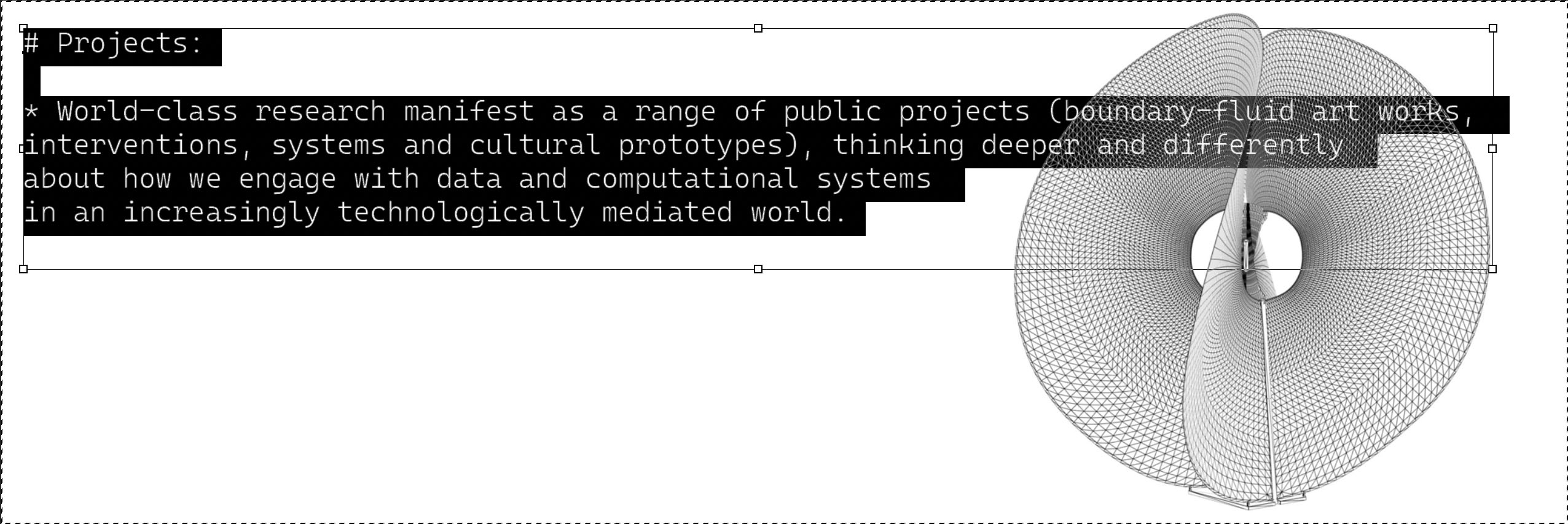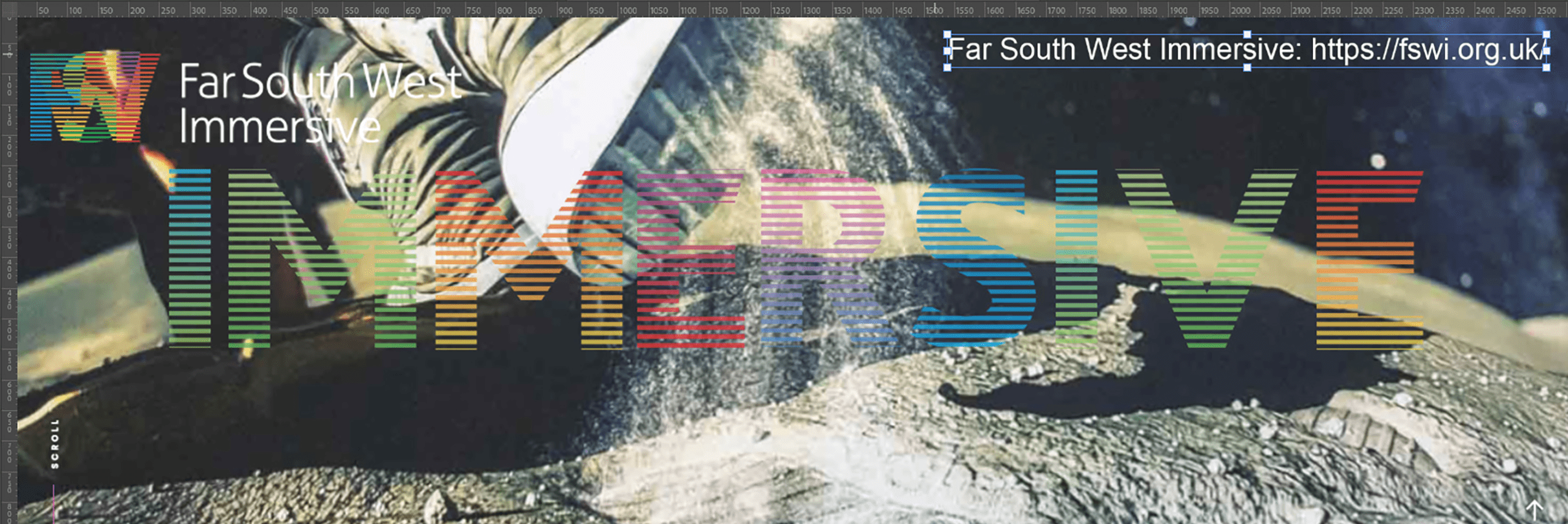The new Immersive Media Lab in the School of Art Design and Architecture (opening 09/2020) complements a suite of creative Labs that enable a blurring between the physical and the virtual, the real and the imaginary.

Immersive Media Lab:
The Immersive Media Lab is a new digital initiative which sits alongside the Digital Fabrication Lab on the ground floor of the Roland Levinsky Building. These spaces are showcase statements for the School of Art Design and Architecture which celebrate a dynamic engagement with (post)digital innovation as a catalyst for creative production, playful experimentation, pedagogic invention and industrial engagement.
Context:
The Immersive Media Lab builds on the rich digital history of the School’s research and creative activities which date back to the first wave of VR technologies in the 1990’s and beyond to the development of shared immersive experiences of fulldome environments. Recent initiatives, such as the South West Creative Technologies Network ‘Immersion’ fellowships and the development of the Market Hall £7 million Fulldome in Devonport, demonstrate an experimental and progressive approach to these new immersive technologies, associated production practices, new audiences and the broader industrial context for these volatile and emerging technologies.
Users:
Immersive Media Lab will be used by Undergraduate and Masters programmes from within the School where these practices are core, such as Virtual Reality Design, Digital Media Design, Game Art and Design, but also areas such as Architecture, Creative Media, Illustration, Design), the Faculty (such as performance) and across the University (such as eHealth, robotics and Earth Sciences), as well as by PhD, post doc and researchers. The Immersive Media Lab is fundamentally interdisciplinary. It will also provide an interface with industry, allowing collaborative production and research projects.
 Immersive Media Lab:
Immersive Media Lab:
The Immersive Media Lab explores the development and application of virtual, augmented and simulated worlds. The Immersive Media Lab is equipped with: multi camera Motion Capture (Vicon) with marker and markerless data capture / a variety of Augmented Reality and Virtual Reality systems (Vive, Oculus, HoloLens 2, Magic Leap) / modeling and gaming workstations / 3m Fulldome / Pro 3D camera kit / Projection wall.
 Maker Lab:
Maker Lab:
The Maker Lab is equipped for experimental electronics, micro-controllers/computing, robotics, 3D scanning and printing. Developed as a prototyping space to bring together elements from all the other labs to synthesize experimental elements into wearables, Internet of Things, environmental technologies, remote sensing and drones. From large scale interactive props to micro-electronics, the Maker Lab cultivates experimental and makerly practices.
 Digital Fabrication Lab:
Digital Fabrication Lab:
The new Digital Fabrication Laboratory enables new solutions to close the gaps between digital media and physical production processes, forcing a step change in the way we design, make and build, including: Additive Manufacturing: Fused Filament Fabrication, Stereolithrography, and Polyjet: Laser Cutting, CNC Milling, 3D Laser Scanning (objects and environments), and Robotic arms.
 Immersive Vision Theatre:
Immersive Vision Theatre:
The IVT is a ‘Fulldome’ architecture that houses a powerful projector fitted with a ‘fisheye‘ lens, 10.1 audio system, and customised powerful computers to wrap data, models, video and images around its inner surface. The IVT is used for a range of learning, entertainment and research activities, including transdisciplinary teaching, bleeding edge research in modelling and data visualisation.
 The Market Hall:
The Market Hall:
i-DAT and the University of Plymouth are supporting the new Market Hall development in Plymouth by RIO. This unique 18 meter fulldome will be used as a venue for experimental immersive audience experiences. Inspired by the Satosphere in Montreal the Market Hall Fulldome will allow the prototypes and productions developed through the Immersive Media, Digital Fabrication and Maker Labs and the IVT to reach significant audiences.
Production Pathways:
The Immersive Media Lab incorporates immersive technologies such as virtual reality, augmented reality, immersive audio and mixed reality. It will be used to capture aspects of the real world through motion capture, scanning, data modelling and simulation and project back into the world using augmented reality, fulldome and projection mapping.
The Immersive Media Lab offers a highly flexible workflow with easy distribution of digital assets to other labs and studios. As an example, the flow of production could begin with a real-time mocap character capture into Unity 3D and out to a fulldome corrected projection mapping interactive game, with 3D models feeding into the Digital Fabrication Lab for 3D printing.
Whilst there are specific workflows between the mocap system and game engines or 3D modelers, the space, systems and pedagogic/research practice will allow users to define new experimental production processes which respond to both the technological affordances and in response to interdisciplinary insights.
Space:
The Immersive Media Lab sits at the centre of a complex and experimental series of overlapping production pathways which offers opportunities for high level research, enterprise and knowledge exchange, creative experimentation and general messing around with the future.
The space itself has been designed to be flexible to allow several parallel activities. The space may also need to be cleared to allow for specific usage, such as a projection space, mocap performance or hackathon lab. Fundamentally the Immersive Media Lab is not locked down to any single practice, discipline or user group. The technologies will need to be flexible enough to enable this approach.
The space will be used to develop new pedagogic approaches to digital design and creative practice which will go beyond any typical or traditional usage. The student experience is central to this pedagogy and an open, experimental and playful approach will be reflected in the technologies incorporated in the Immersive Media Lab.






You must be logged in to post a comment.